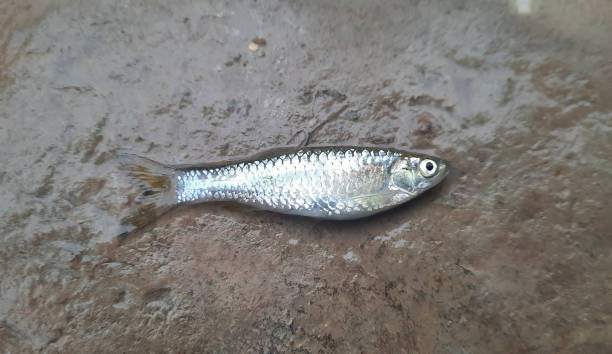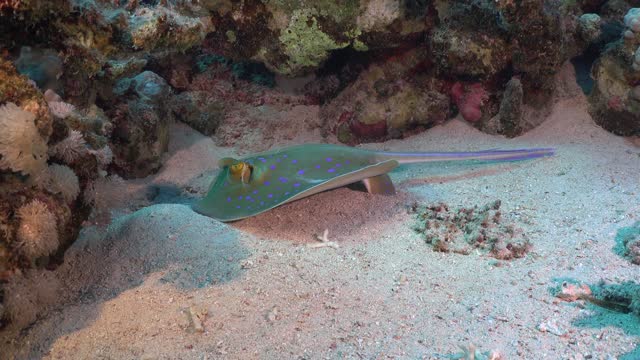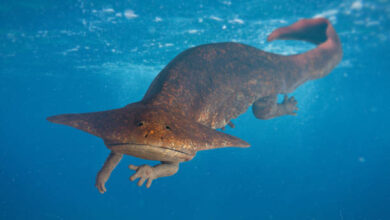What are the 5 differences between cartilaginous fish and bony fish?

When we think of fish, we often picture them with sleek, scaly bodies and fins gliding through the water. However, not all fish fit this description. There are two main types of fish in the world: cartilaginous fish and bony fish. While they may share some similarities, these two groups of fish have distinct characteristics that set them apart. In this blog post, we will explore the differences between cartilaginous fish and bony fish and discover what makes them unique. So, let’s dive in and learn more about these fascinating creatures of the sea.
Overview of Cartilaginous Fish
Venture with us into the diverse world of cartilaginous fish, or as scientists call them, Chondrichthyes. This group is a captivating mix of creatures, including the formidable sharks, graceful rays, and mysterious chimaeras. Their most striking characteristic? Their skeletons are not formed of bone, like most animals, but of cartilage, the flexible and resilient material that shapes our ears and noses. This remarkable adaptation gifts these fish with a degree of flexibility that their bony counterparts can’t match, even if it does come at the cost of durability.
When it comes to identifying features, cartilaginous fish are pretty distinctive. Their mouths are armed with formidable jaws, which coupled with their multiple gill slits, lend them a look that’s hard to forget. But perhaps their most intriguing feature is their skin, which is encased in what can only be described as ‘skin-teeth’. Known technically as dermal denticles, these tiny structures coat the fish’s body, offering a tough, protective barrier against the outside world. So, the next time you find yourself swimming alongside a shark, don’t be too surprised if it feels more like sandpaper than the sleek, smooth skin you might expect!
Unique Characteristics of Bony Fish
Let’s embark on an exploration of the world of bony fish, scientifically referred to as Osteichthyes. This vast group comprises a staggering 30,000 species across the globe, making it the largest group of fish in existence. The trademark of these fish is their solid, bony skeleton, providing them with sturdy support and enhanced durability.
Osteichthyes are adorned with a single pair of gills, securely shielded by a bony plate or operculum. Unlike their cartilaginous counterparts, bony fish don’t need to swim continuously to breathe, as the operculum allows for efficient oxygen flow even when they’re stationary.
Their bodies are typically decked out in scales, which overlap one another like roof tiles. This provides a smoother exterior, which combined with their bony structure, assists their fluid movement in the water. These scales also play a crucial role in their protection, offering an extra layer of armor against potential predators.
But it’s not just their external structure that sets these fish apart. Inside, you’ll find an incredible organ called the swim bladder. This gas-filled sac is a marvel of evolutionary engineering, enabling bony fish to maintain their buoyancy with remarkable precision. By adjusting the volume of gas within the swim bladder, they can ascend or descend in the water column at will.
So, whether you’re marveling at a rainbow-colored parrotfish grazing on a coral reef, or watching a school of silver herring dart through the open ocean, remember, these bony fish are not just beautiful; they’re biological masterpieces!
Skeletal Differences
Diving deeper into the fascinating differences between these two fish categories, let’s explore their skeletal structures. Cartilaginous fish, or Chondrichthyes, are bestowed with skeletons that are entirely composed of cartilage. Imagine the flexibility of your ears or the tip of your nose – that’s what their skeletons are like! This attribute allows these underwater creatures to enjoy a greater degree of movement, a characteristic which proves handy in their watery world. Additionally, their cartilage-built skeletons give them a lighter frame, which in turn facilitates more efficient swimming.

On the flip side, we have the bony fish, or Osteichthyes, which come equipped with hard, robust skeletons made entirely of bone. While this might limit their flexibility compared to their cartilaginous counterparts, it provides them with a sturdy skeletal framework that offers protection against predators and helps in supporting their body structure. However, this robust bone structure is also denser and thus heavier, which affects the way these fish move in their aquatic environments.
Therefore, when you’re next watching the awe-inspiring dance of these underwater creatures, remember the unique skeletal structures that make each group so distinct and enable them to thrive in their respective ways.
Variations in Skin and Scales
Imagine if you could touch a fish and immediately know its category. Well, that’s pretty much possible, given the fascinating differences in their skin and scales. Cartilaginous fish, our fearless sharks, stingrays, and chimaeras, boast a unique skin texture that’s unlike anything you’ve ever felt. They’re covered in tiny, tooth-like projections, charmingly named ‘dermal denticles’. These ‘skin teeth’ lend the fish a rather rough, sandpaper-like texture, an adaptation that offers a tough, protective barrier against the outside world.
Let’s now swim over to the realm of the bony fish. A single touch reveals a world of difference. Their skin is coated in flat, overlapping scales, arranged neatly like tiles on a roof. This particular arrangement gifts the fish a smooth exterior, which, in concert with their hard-boned bodies, aids their graceful movement through the water. It’s not just about elegance, though. These scales also play a key role in defense, offering an added layer of armor against potential predators. So, the next time you’re admiring a fish, whether at an aquarium or in the great outdoors, take a moment to appreciate the incredible diversity of their skin and scales, a testament to the marvels of evolutionary adaptation.
The Divergence in Reproduction
Taking a peek into the mysterious underwater world of reproduction, we find intriguing disparities between cartilaginous and bony fish. These aquatic inhabitants employ vastly different tactics when it comes to propagating their species. Cartilaginous fish, like the formidable sharks and elegant rays, employ viviparity, a reproductive strategy characterized by the birth of live offspring.
This means that after fertilization, the embryos continue to develop within the mother before being born as fully formed juveniles. This method may seem demanding, given the extended gestation period, but it does have its advantages. Predominantly, it ensures that the offspring are born into a world where they are better equipped to survive, even if the number of progeny produced is fewer compared to their bony counterparts.
Switching gears to the bony fish, we witness a vastly different reproductive strategy. Oviparity, or egg-laying, is the norm for these hardy swimmers. If you’ve ever marveled at the sight of a coral reef bustling with fish, know that such diversity is largely due to this method. Bony fish release a copious number of eggs into the environment, where they are externally fertilized. The end product is a multitude of tiny hatchlings that flood their aquatic habitat. This strategy is essentially a numbers game. While each individual hatchling has a lower survival probability, the sheer number of offspring increases the odds of survival for the species as a whole.
From a shark nurturing its young within its body to a bony fish parent releasing a cloud of eggs into the ocean currents, the divergence in reproduction methods is yet another captivating aspect of the underwater world. So the next time you’re gazing at these aquatic marvels, consider the extraordinary lengths they go to ensure their survival for generations to come.
Adaptations in Buoyancy Control
Dive with us into the amazing world of buoyancy, the art of staying afloat in the aquatic world. The mechanisms fish employ to master this vital skill vary vastly between our two groups of interest. Let’s take a plunge into the details.

Our cartilaginous friends, with their unique, flexible skeletons, have a unique method of maintaining buoyancy that does not involve a swim bladder. Instead, these agile swimmers rely on their liver to keep them from sinking. Yes, you heard that right, their liver! This is no ordinary liver, but one that is filled with oil. This oil, less dense than water, provides the buoyancy required for these creatures to maneuver the depths. The next time you watch a shark gliding effortlessly in the water, remember the ingenious adaptation of its oil-filled liver.
Now, let’s flip the tide and swim over to our hard-bodied swimmers, the bony fish.
These creatures have a biological wonder hidden within their bodies, a marvel of evolutionary engineering known as the swim bladder. This unique organ is a gas-filled sac that enables bony fish to control their buoyancy with remarkable precision. By adjusting the volume of gas within the swim bladder, these creatures can rise or dive in the water column at will, an adaptation that offers an enormous advantage in their watery world. Whether it’s a tiny guppy or a massive marlin, this astonishing organ empowers these fish to conquer their aquatic environments with finesse.
So there you have it, two vastly different, yet equally fascinating, methods of buoyancy control, a testament to the adaptability of these aquatic marvels. When you’re next admiring the graceful dance of fish beneath the waves, spare a thought for the intricate adaptations that enable their underwater ballet. Whether it’s an oil-filled liver or a gas-controlled swim bladder, the story of buoyancy in fish is just one of the countless wonders that the aquatic world holds.
Differences in Gills and Breathing
Let’s plunge into the final depths of our aquatic exploration by discussing the gill structure and breathing adaptations in our two groups of fish. Firstly, let’s swim over to our cartilaginous companions. Equipped with five to seven pairs of gill slits on each side of their bodies, these species showcase a striking external feature. Their gills, however, lack an operculum, or a gill cover. What’s the significance of this you may ask? Well, due to this structural absence, some cartilaginous fish need to remain in constant motion to ensure a steady flow of oxygen-filled water over their gills. This essentially translates to a swim or suffocate scenario!
Let’s now surface and catch our breath with our bony buddies. Unlike their cartilaginous counterparts, these fish possess a single pair of gills, neatly ensconced behind a protective gill cover, the operculum. This unique feature plays a crucial role in their respiration. The operculum enables the bony fish to draw water over their gills even while stationary, freeing them from the necessity of constant motion to breathe. It’s a fascinating contrast, isn’t it?
So, the next time you observe a fish, whether it’s a shark cruising the ocean depths or a goldfish fluttering in a home aquarium, take a moment to marvel at their gill structure and how it dictates their lifestyle. From the continual swim of the shark to the static hover of the goldfish, it’s all about adaptation and survival in the underwater realm.



